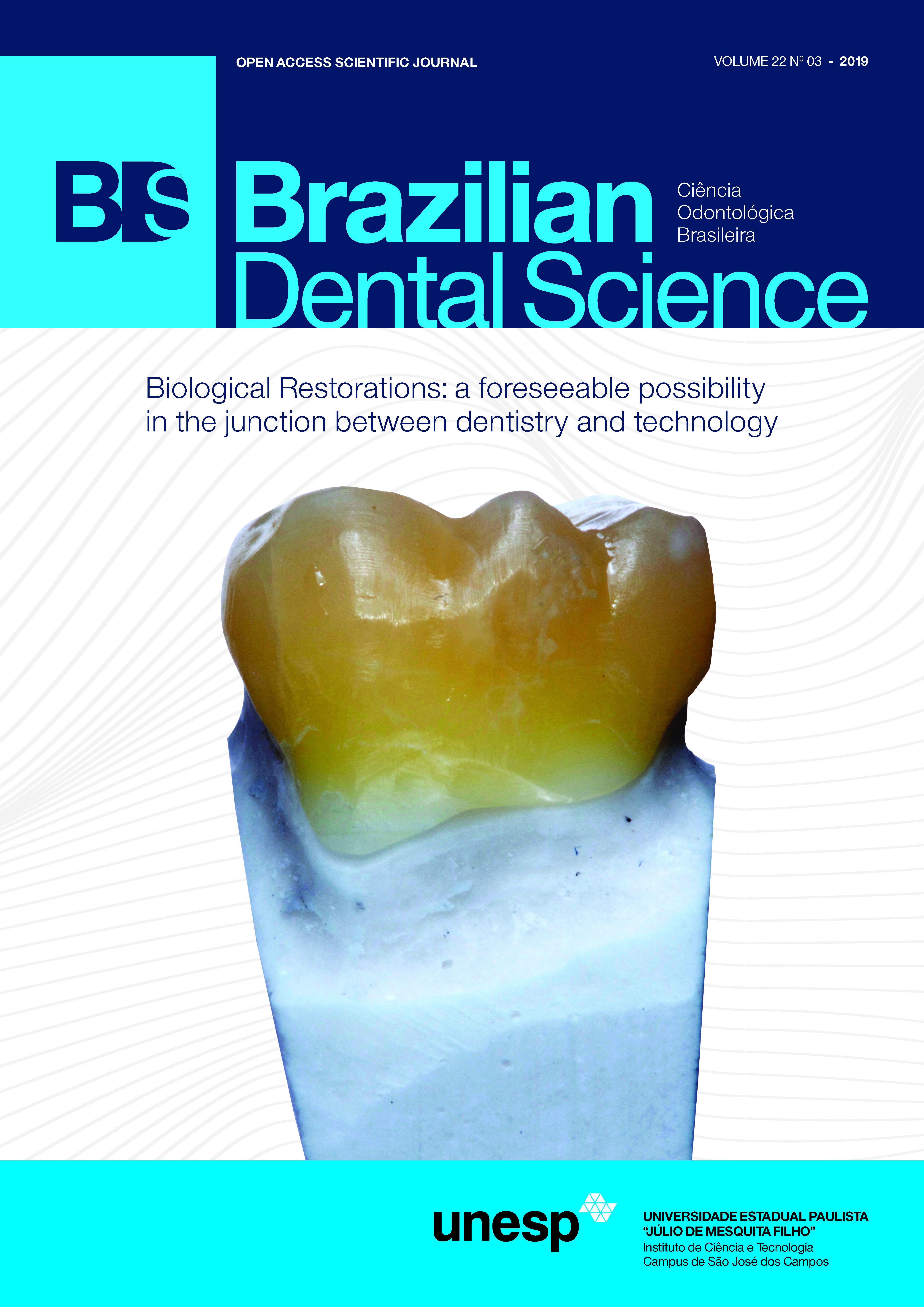Influence of different types of light curing units and photoinitiators in microhardness and color of composite resins after immersion in wine
DOI:
https://doi.org/10.14295/bds.2019.v22i3.1754Abstract
Abstract
Objective: the aim of this study to evaluate the microhardness and color change (?E) of composite resins, light cured with different LEDs, submitted to staining drink. Materials and Methods: Two composite resins with lucerin-TPO (Tetric N-Ceram/ Vit-l-escence) and camphorquinone (Filtek Z350) were select. Specimens (n=120) were prepared. Then were photopolymerized with LED of singlewave or polywave. Microhardness and color evaluations were performed before and after chalanges. Data were evaluated by two-way ANOVA, Tukey's test (p?0,05). Results: No statistically significant difference between the two generations of LEDs was found for microhardness data. Regarding the ?E, statistical difference between the two LEDs was observed for Tetric N- Ceram and Filtek Z350. Conclusion: Compostion of composites appears to have more influence on analyses than the type of LEDs.
Downloads
Downloads
Published
How to Cite
Issue
Section
License
Brazilian Dental Science uses the Creative Commons (CC-BY 4.0) license, thus preserving the integrity of articles in an open access environment. The journal allows the author to retain publishing rights without restrictions.
=================




























